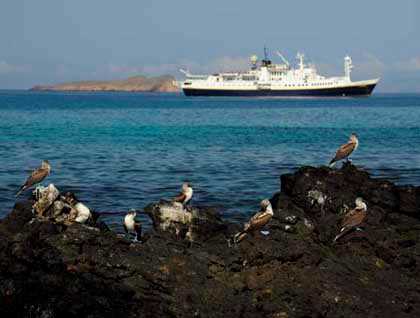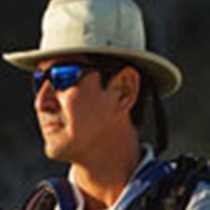Charles Darwin was an amazing observer. During his five weeks in the Galapagos, he managed to recognize the different kinds of mockingbirds and their specific islands of origin, and the reasons behind the uneven shape of tuff cones. I marvel at the many details about barnacles, coral reefs, and finches that he described in his prolific publications. I also admire the talent of observation in my colleagues on board, who can recognize subtle changes in the behavior of Galapagos animals and in the population changes in certain organisms.
During our last snorkeling outing, Jason Heilmann witnessed broadcast spawning of rainbow wrasses. It was like an explosion of colors in the water column, with all of the fish ascending in unison, and then descending back down. They were releasing their eggs and sperm for external fertilization, and Jason caught it on film and shared it during recap.
In another interesting discovery today, while walking at Dragon Hill, Salvador Cazar noticed marine iguanas climbing sea purslanes. This is unusual, for these creatures from the sea to rest on top of succulents along the shore line. Maybe for shade, or to avoid the hot ground? Salvador approached them, observed, and realized that they were feeding on the plant. A reptile which is supposed to be the only sea-going lizard in the world, which has evolved to digest algae, and now, changing its diet back again to consume a land plant. Perhaps there isn’t enough algae in the ocean, due to high sea temperatures recently. We can speculate and arrive to conclusions. But the first step is observation, and our naturalists have keen eyes for observing as well as one of the greatest virtues of human kind, curiosity.
We also found true land iguanas further along the trail, happy with the abundance of vegetation, as the warm season means rain and therefore prosperity for most of the land species.
To celebrate it all, we sailed around Daphne Major, a tuff cone where scientists have done research for four decades. They have been studying color-banded finches since 1972, documenting every little change. Through their observations, we have learned that we can witness natural selection at work without having to wait for millions of years.
It was another fantastic day in the Galapagos, full of exploration and discovery, as we celebrate one of man’s greatest talents—the talent of observation.









